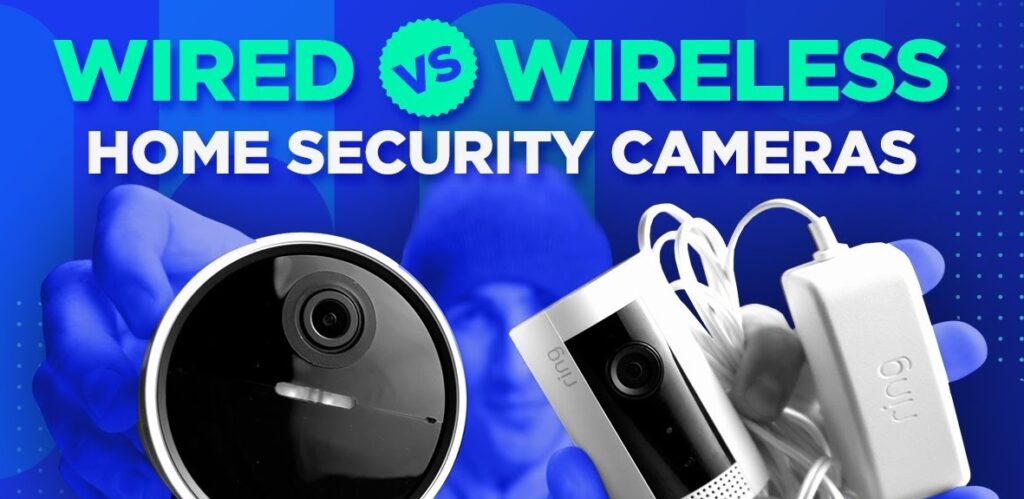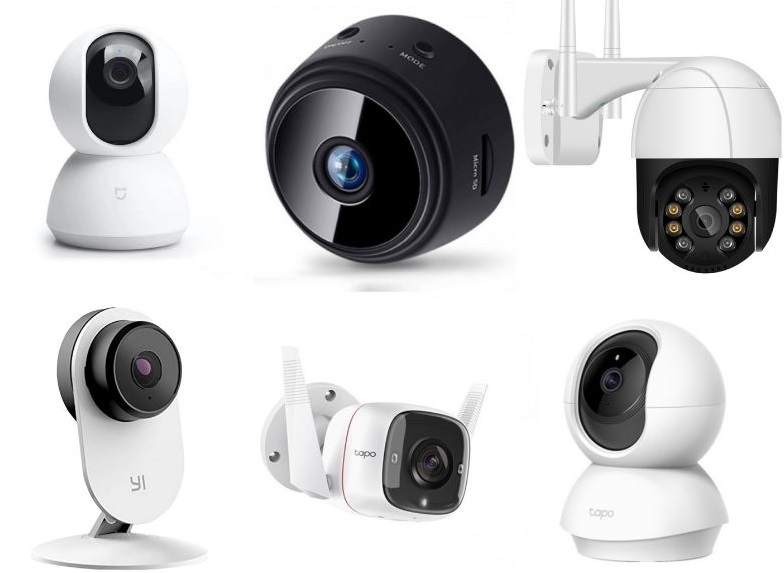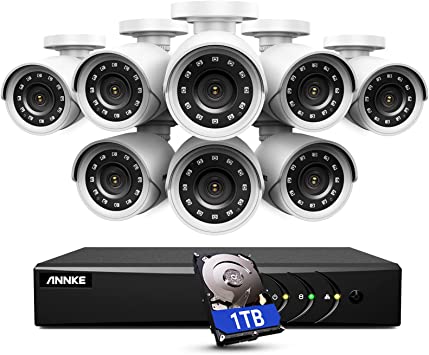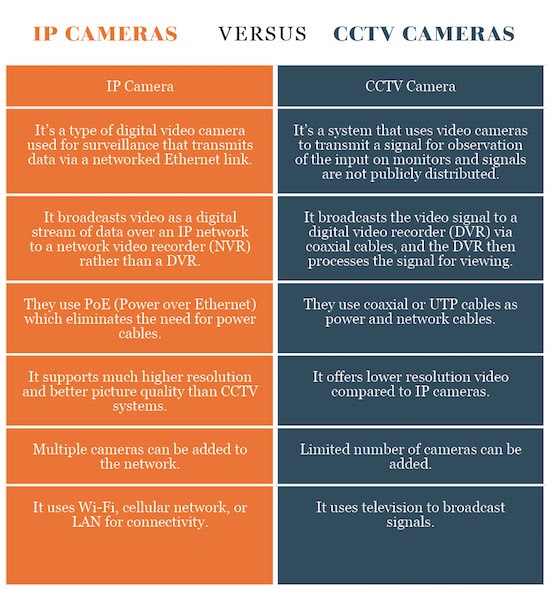In today’s growing age of security and technology it has never been more affordable to install a video surveillance system in your residence. With a plethora of brands, types, sizes, colors and options there are thousands of options to choose from. Whether they are IP cameras or CCTV (closed circuit television) systems all of them allow that blanket of security, giving you and your family peace of mind knowing what’s happening in and around your home at all times. With so many varieties choosing the right options for your abode can become a little overwhelming if not a little frustrating if you’re not sure of what options you need or don’t need. We’re here to help, educating you on the features to look for and the features to avoid in home security camera systems.
To IP, or Not To IP?…..That is the Question.

Before reading further on it’s important to note that there are 2 types of camera systems available, IP and CCTV. IP cameras are wireless cameras that connect over your internet connection (either wireless or POE – Power Over Ethernet). They are given an IP address (hence the name IP) from your home router and are accessible by that IP address. CCTV cameras use a DVR to record the information and can be accessed by utilizing the DVR’s IP address, port and the credentials to view the cameras. Both have their advantages as well as disadvantages.
Whether it’s about protecting your home or any private property from prying eyes, there are two common types of systems used for video surveillance, IP Cameras and CCTV Cameras. While both the cameras are used basically for the same purpose, they differ in how they function to meet specific security needs. They are also the most common types of cameras used in surveillance system these days. An IP Camera, or Internet Protocol Camera, is a digital video camera used for surveillance and at the same time, captures and transmits data over a fast Ethernet link. CCTV, or Closed-Circuit Television, is a system in which the signals are closely monitored for surveillance and security purposes. We present an unbiased comparison between the two so you’d be able to make a smart decision on how to best protect your home or business.

What is an IP Camera?
The applications of electronic systems for security purposes have changed dramatically over the years. Unlike CCTV cameras with television lines, digital IP cameras are the next generation of surveillance system developed for a CCTV environment, but with better image quality, better resolution, and more everything. They generate an image directly from digital data with no continuous stream of analog video being broadcasted. They are more like the digitized version of CCTV cameras but with multi-user support meaning multiple users can use the cameras on multiple devices, plus advanced control features and flexibility to add unlimited cameras to the network without the need of any proprietary hardware.

Just a small sample of IP cameras on the market, some are battery operated others plug into any standard wall outlet for power. Some are inside others can be mounted outside based on their “Ingress Protection” rating. All connect via an IP address assigned by your home router.
Advantages
- Affordable
- Can be purchased singularly or in quantities (expandable)
- Ease of use and connection
- Easily mounted in a variety of locations
- Excellent video quality 720+ resolution
- Some allow for POE connection
Disadvantages
- Security
- Many cheap brands to be aware of
- Many are cloud-based
- Not all support local storage
Click here to get our top recommendations for IP cameras.

What are CCTV Cameras?
The traditional CCTV cameras were primarily used for intrusion-detection applications mostly for alarm assessment purposes. That changed when solid-state cameras came to the picture in the mid-1980s and quickly became the standard for video surveillance because of their low maintenance cost and ease of use. Further advancement of technology and communication has pushed the limits of CCTV surveillance to an unprecedented level which results in an industry rich in computer and communication technologies. From an immature system to a full-fledged surveillance system, CCTV cameras has emerged as a standard for security industry.
An example of CCTV security camera system, usually allotted up to 32 cameras per DVR. More secure and reliable than most IP cameras, also more expensive.

Advantages
- Security
- Reliability
- Local storage
- Hardwired to your DVR system
- POE allows for power and communication over a single connection
Disadvantages
- Can be costly
- Limited on number of cameras that can connect to a single DVR unit
- Not as easy to access camera feed as IP cameras
- Image quality can degrade

Difference between IP and CCTV
Technology involved in IP Camera and CCTV
An IP camera is a networked digital video camera that transmits real-time video footage via a computer network and the internet. They are often used for IP surveillance, more like the digitized version of CCTV cameras with better picture quality and advanced recording functions. It is quickly becoming the standard for video surveillance. Closed-circuit television (CCTV) cameras, on the other hand, are used to transmit signal to specific place with a limited set of monitors within a closed system and is distinct from broadcast television. The network of CCTV cameras makes up a complete system.
Flexibility
CCTV depends on strategic placement of cameras and monitoring of the video footage on monitors and closed observation of the input. The cameras communicate via monitors and video recorders. Videos are stored digitally using a physical digital video recorder (DVR) across private coaxial cables or wireless communication links. Remote viewing is possible when the DVR is connected to the internet.
IP cameras are generally plug-and-play devices that use NVR (network video recorder) rather than a conventional DVR to store digital content, plus they can be used in conjunction with CCTV cameras to have hidden cameras to cover blind spots.
Broadcast
Unlike analog CCTV cameras, IP cameras broadcast video footage as a digital stream of data over a computer network (LAN) or the internet to a network video recorder (NVR) through internet protocol. IP cameras need a connection to the same network as the NVR. They use PoE (Power over Ethernet) so that only one cable can be used for both power supply and video transfer eliminating the need for power cables. CCTV cameras send the video signal to DVR via coaxial cables, and the DVR then processes the signal for viewing. Unlike IP cameras, CCTV cameras require a direct link to the DVR.
Expansion
All the cameras in a CCTV system has to be placed in one location and the cameras require a direct connection to the base station or the DVR, so expansion of a CCTV system can be a whole lot pricey. Additionally, there’s only limited number of cameras that can be added to the network because a DVR is only able to accommodate up to 32 cameras, on the higher side and adding more cameras require an additional DVR. There’s no such limit on IP cameras and you can add almost any number of cameras to the network which would only require an additional storage without any major cost involved.
IP Cameras vs. CCTV Cameras: Comparison Chart


